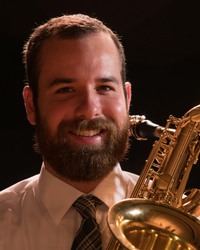2024 Idaho Music Educators Association All-State Baritone Saxophone Audition Material
All-State Alto Saxophone Audition Materials
Recording Tips
- Record yourself frequently while you practice! It is always beneficial to know what you actually sound like.
- If possible, have someone else be the ‘producer’ during your recording so you can focus on performing. Make sure you get a full take early on before you are too tired.
- Try to set up the microphone about 5 feet away, at a 45-degree angle from where you are playing (not right in front of you). Aim the microphone at the G# key on your horn.
Boise State Saxophone Faculty
-

Dr. Matthew Castner
Assistant Professor: Saxophone/Music Industry

